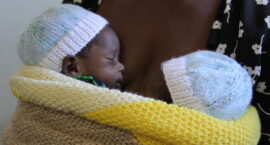In 2021, more than 360 Black women died of maternal health causes across the country, according to the CDC—up from just over 290 in 2020 and more than 240 the year prior.
Despite advancements in medicine and technology over the years, the racial gap in who is suffering the most severe consequences of childbirth is growing, and most Black maternal and child health experts point to systematic racism as the root cause.












